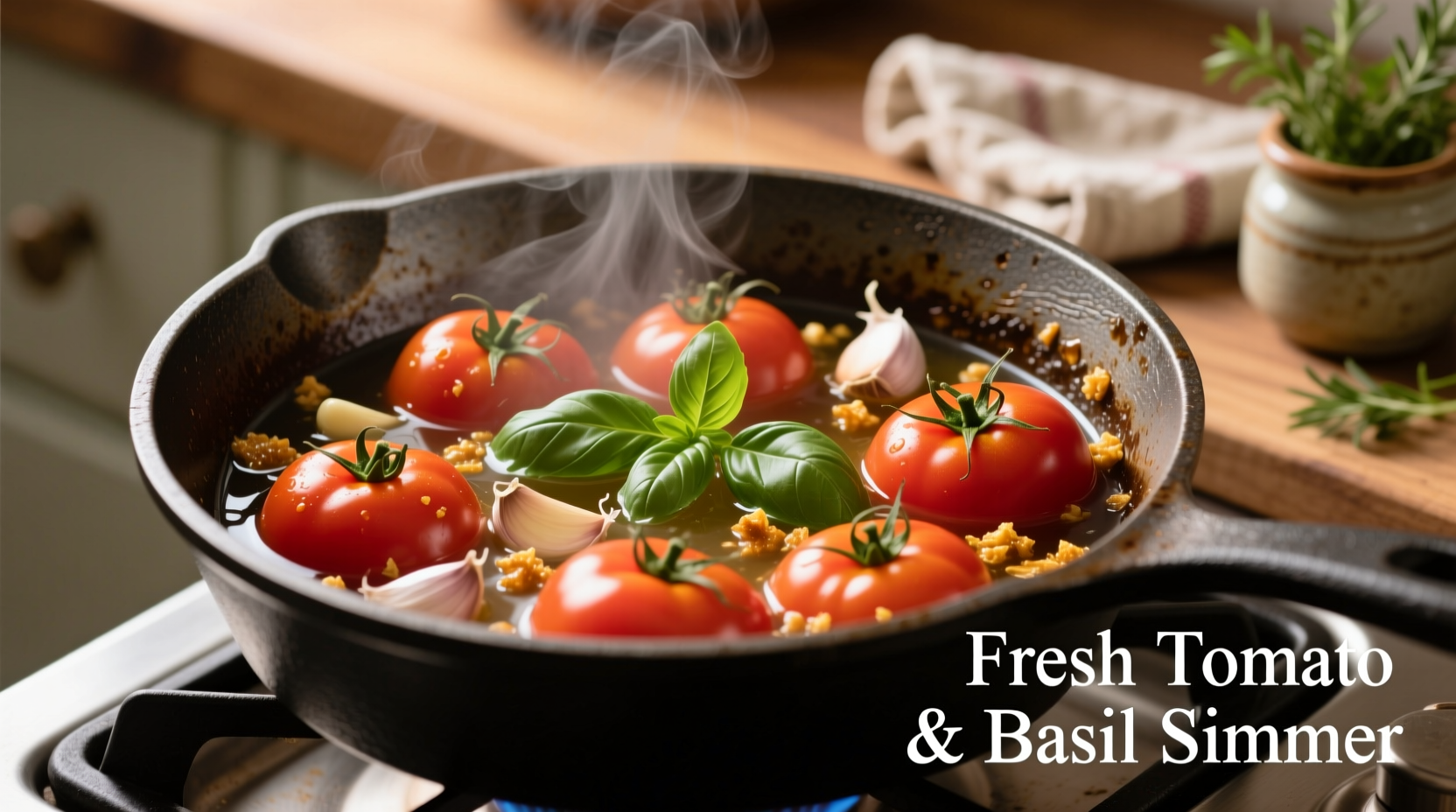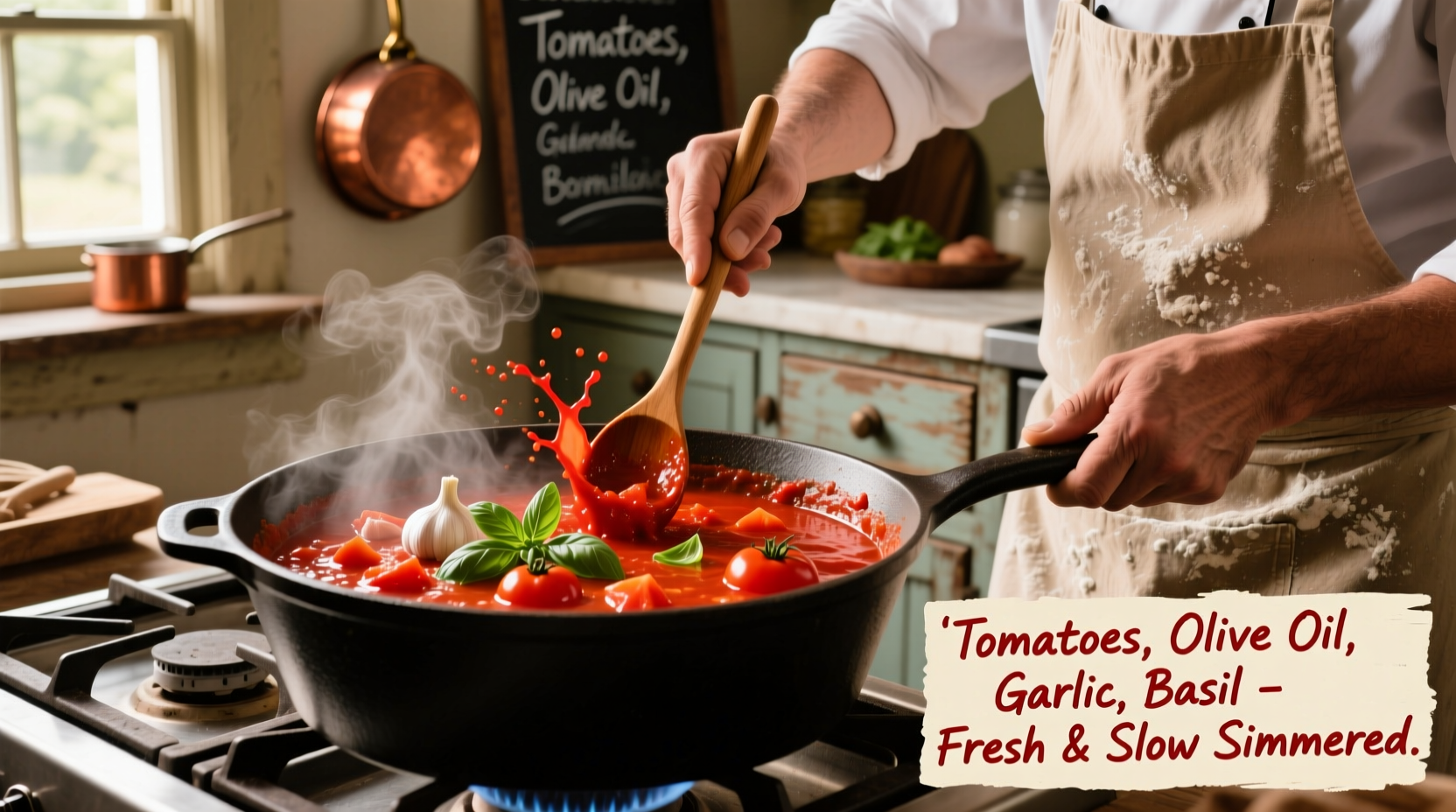Stop Wasting Money on Store-Bought Sauce
Discover how to create restaurant-quality tomato sauce in under an hour using simple, fresh ingredients you probably already have. This guide reveals professional techniques that transform basic pantry items into a versatile sauce perfect for pasta, pizza, and more—without preservatives, excess sugar, or artificial flavors.
Why Homemade Beats Store-Bought Every Time
Commercial tomato sauces often contain added sugars, preservatives, and inconsistent flavor profiles. When you make sauce from scratch, you control the quality and balance of ingredients. According to the USDA's National Nutrient Database, homemade tomato sauce contains 30% less sodium and no added sugars compared to leading commercial brands.
Your Tomato Sauce Success Roadmap
Follow this practical sequence to ensure perfect results every time:
Step 1: Selecting & Preparing Ingredients
Choose ripe, in-season tomatoes for the best flavor. Roma tomatoes work particularly well due to their lower water content and rich flavor. For a standard batch:
- 2.5 lbs (1.1 kg) ripe tomatoes, cored and quartered
- 3 tbsp extra-virgin olive oil
- 1 medium onion, finely diced
- 3 garlic cloves, minced
- 10 fresh basil leaves
- 1 tsp sea salt (adjust to taste)
- Optional: 1 carrot (for natural sweetness)

Step 2: Building Flavor Foundations
Professional chefs know that flavor development starts with proper technique:
- Heat olive oil in a heavy-bottomed pot over medium heat
- Sauté onions until translucent (5-7 minutes)
- Add garlic and optional carrot, cooking until fragrant (1-2 minutes)
- Add tomatoes, basil, and salt—never add water
- Bring to a gentle simmer, then reduce heat to low
Step 3: The Critical Simmering Process
This is where most home cooks go wrong. Proper simmering technique makes all the difference:
- Cover partially to allow steam to escape
- Maintain a gentle bubble—not a rolling boil
- Stir occasionally with a wooden spoon
- Cook for 45-60 minutes until thickened
- Remove basil stems before serving
| Sauce Variation | Key Ingredients | Best Used For | Simmer Time |
|---|---|---|---|
| Basic Tomato Sauce | Tomatoes, garlic, onion, basil | Pasta, lasagna | 45-60 min |
| Arrabbiata | Tomatoes, garlic, red pepper flakes | Spicy pasta dishes | 30-45 min |
| Marinara | Tomatoes, garlic, oregano, minimal onion | Pizza, dipping | 20-30 min |
| Vodka Sauce | Tomatoes, cream, vodka, Parmesan | Penne alla vodka | 25-35 min |
Step 4: Troubleshooting Common Issues
Fix these problems before they ruin your sauce:
- Too watery? Simmer uncovered for additional 10-15 minutes
- Too acidic? Add a pinch of baking soda (1/8 tsp) or grated carrot
- Bitter taste? Remove seeds and gel from tomatoes next time
- Not flavorful enough? Add tomato paste (1-2 tbsp) at beginning
Step 5: Proper Storage Techniques
Extend your sauce's shelf life with these professional methods:
- Refrigerator: Store in airtight container for up to 5 days
- Freezer: Portion into ice cube trays, then transfer to bags (keeps 6 months)
- Canning: Process in water bath for 35 minutes (follow USDA guidelines)
Tomato Sauce Evolution Timeline
Understanding the history helps appreciate modern techniques:
- 16th Century: Tomatoes introduced to Europe from the Americas
- 17th Century: First recorded tomato sauce recipes in Spanish cookbooks
- 1820s: Tomato sauce becomes popular in Italian cuisine
- 1876: First commercial tomato sauce produced in the United States
- 1940s: Canned tomato sauce becomes widely available
- Present: Focus returns to fresh, homemade versions with quality ingredients
When to Use Different Sauce Types
Not all tomato sauces work for every dish. Consider these context boundaries:
- Thick sauces (like pomarola): Best for stuffed pasta or as a pizza base where excess moisture would make crust soggy
- Thin sauces (like marinara): Ideal for quick-cooking dishes or when you want the sauce to coat pasta evenly
- Smooth sauces: Use for dishes where texture matters, like lasagna or eggplant parmesan
- Chunky sauces: Perfect for heartier dishes like rigatoni or when serving with meatballs
Advanced Flavor Enhancement Techniques
Take your sauce to the next level with these professional methods:
- Dry brine tomatoes: Sprinkle quartered tomatoes with salt and let drain 30 minutes before cooking to concentrate flavor
- Layered seasoning: Add half the salt at beginning, half near the end for balanced flavor
- Finishing with fresh herbs: Stir in additional basil just before serving for bright flavor
- Quality olive oil finish: Drizzle extra-virgin olive oil on finished sauce for richness











 浙公网安备
33010002000092号
浙公网安备
33010002000092号 浙B2-20120091-4
浙B2-20120091-4